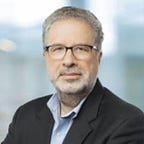The Experiences That Made Me an AIDS Advocate — and Keep Me Going 30 Years Later
I grew up on Sullivan Street in New York City’s SoHo neighborhood in the 1960s and 1970s.
At the time, it was home to Italian immigrants, struggling artists, and young gay men seeking a haven in the city. It was warmth and noise and energy all mixed together.
It was full of life.
Even after I left home for post-graduate work in the early 1980s, I would often return to visit my mother. On each trip home, I noticed the vibrancy of my neighborhood starting to fade, with pain and fear creeping in. Fear of a disease — for which we didn’t have a name and knew little about — was steadily growing.
We soon discovered that disease was AIDS.
After completing my post-doctoral fellowship in late 1983, I felt compelled to join the search for an HIV treatment, haunted by the faces of people around me suffering without options. A decade later in 1995, our lab was part of the team that discovered antiretroviral triple drug therapy. This incredible scientific breakthrough meant that people infected with HIV — like the men in my neighborhood — could stay alive and healthy.
15.8 million people are accessing those lifesaving drugs today. Looking back at the early days leaves me astounded by how far we’ve come.
Unfortunately, however, this story is not one of pure triumph over tragedy. Much like the disease itself, the picture of AIDS today is complex and continually evolving. In an epidemic that already disproportionately affects marginalized people, some of the most vulnerable are still being left behind.
This is especially true for women and girls.
Shouldering an overwhelming burden of the global epidemic, women and girls represent nearly 60% of all people living with HIV and more than 70% of new infections among adolescents. Nearly 400,000 young women are newly infected with HIV every year, the vast majority in East and Southern Africa.
A few months ago I was in a health clinic in Lusaka, Zambia, where the extent of the epidemic among women was striking. I listened to some of the women as they shared the hardships they faced in simply gaining regular access to HIV medicines. They spoke of the worry that their daughters and sisters would get infected, too.
We must work to truly address poverty, gender inequality, and sexual violence — the structural barriers women and girls face that place them at greater risk for HIV infection.
Some 30 years since I first witnessed the cruel effects of AIDS in New York, hearing these stories in Lusaka gave me pause. The simple truth is that we’ve made tremendous breakthroughs in treatment and prevention of HIV, but they still benefit far too few people.
Today, if you are diagnosed with HIV and able to begin treatment right away, you can live as long as someone who doesn’t have HIV. But only a fraction of people living with HIV around the globe get this benefit. Some lack access to diagnosis and, even if diagnosed, lack access to antiretroviral drugs.
We now know that helping people living with HIV to suppress the virus can prevent HIV transmission to another person, which is huge for those at highest risk, such as women with HIV-positive partners. We also know that some antiretroviral drugs can also be taken by people who are HIV-negative to prevent infection. This prevention method, known as oral pre-exposure prophylaxis (PrEP), is a powerful way for vulnerable groups to protect themselves.
These drugs will save lives — and, frankly, they are one of the most effective tools we have today — but drugs alone will not be enough. Women, girls, and other vulnerable populations still need better options to protect themselves against HIV. They need tools that offer long-term protection and are specifically geared to their daily lives.
This means we must continue investing in the research and development of promising long-acting prevention methods. Labs and clinical trials are testing exciting ideas, including other methods of PrEP and vaccine candidates. But it will take years for those concepts to be useable.
Until then, we’ll need to do a better job with the tools we have. It is essential to have better information at every level about where we aren’t making the progress we should on this epidemic. We need to use that information to reconfigure our programs to better meet the real life needs of women and girls.
We must work to truly address poverty, gender inequality, and sexual violence — the structural barriers women and girls face that place them at greater risk for HIV infection. Helping young women access knowledge and tools to live healthier lives — through partnerships with the U.S. President’s Emergency Program for AIDS Relief and the Global Fund to Fight AIDS, TB and Malaria — is one important way to address their biggest structural roadblocks.
Confronting all of these challenges will require us to keep the most vulnerable at the center of our efforts. For young women and other marginalized populations around the world, HIV does not merely invade their immune systems — it threatens their ability to prosper.
I’m marking this World AIDS Day by taking a moment to reflect on this.
And now, I’m eager to get back to work and do something about it.
